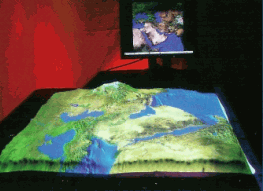Computer and machine interfaces featured in popular sci-fi films often serve to inspire real world applications.
As Chris Noessel, Director of Interaction Design, Cooper, explained during a recent MacWorld keynote speech, the science fiction genre helps to establish an actual interface paradigm, while the real world builds a model that sci-fi then extends.
“Sci-fi influences and sets our expectations, establishing a clear social context for an interface.

“And designers have traditionally – whether knowingly or unwittingly – referenced various science fiction films when creating new tech interfaces.”
To illustrate Noessel’s point, co-presenter Nathan Shedroff, who chairs an MBA design program at the California College of the Arts, highlighted the Star Trek communicator from 1966.
“30 years later, the ‘futuristic’ form was resurrected as the StarTac flip phone from Motorola. Clearly, this is the expectation that was set for the development team.
“As legend has it, one designer supposedly referenced the communicator because that is what he had grown up watching on TV. And obviously, some mobile consumers were familiar with the concept, because they too watched Star Trek.”
Shedroff also noted that the data pad featured in Star Trek: The Next Generation (circa 1987) seems to have presaged Apple’s wildly popular iPad, which he believes may have been “seeded” in The Incredibles as well.

Another example discussed by the Noessel-Shedroff design keynote duo included a 3D cartographic tool inspired by a scene in X-Men.
“This individual – who worked for the US Army Corp of Engineers – needed to provide 3D models to generals in the field. After seeing X-Men, he wrote up a detailed RFP. Four years later there was a working prototype dubbed Xenovision,” said Noessel.

“The device is based on computer controlled pins or rods that rise and fall to conform to project to satellite imagery that can be ‘beamed’ in real-time. The machine has already been used to accurately map parts of Mars, tsunamis and even historical battles.”






